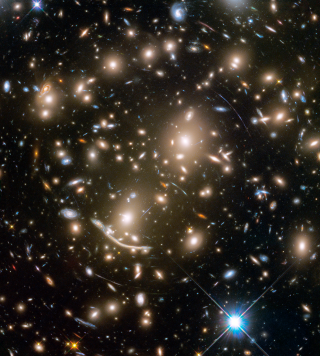Bibcode
Negri, Andrea; Dalla Vecchia, Claudio; Aguerri, J. Alfonso L.; Bahé, Yannick
Bibliographical reference
Monthly Notices of the Royal Astronomical Society
Advertised on:
9
2022
Citations
7
Refereed citations
5
Description
We computed the luminosity of simulated galaxies of the C-EAGLE project, a suite of 30 high-resolution zoom-in simulations of galaxy clusters based on the EAGLE simulation. The AB magnitudes are derived for different spectral bands, from ultraviolet to infrared, using the simple stellar population modelling based on the E-MILES stellar spectra library. We take into account obscuration due to dust in star forming regions and diffuse interstellar medium. The g - r colour-stellar mass diagram, at z = 0.1, presents a defined red sequence, reaching g - r ≃ 0.8, 0.05 dex redder than EAGLE at high masses, and a well populated blue cloud, when field galaxies are included. The clusters' inner regions are dominated by red-sequence galaxies at all masses, although a non-negligible amount of blue galaxies are still present. We adopt Bayesian inference to compute the clusters LFs, testing for statistical significance of both single and double Schechter functions. The multicolour LFs at z = 0 show a knee luminosity that peaks in the infrared and increases with the cluster's mass. The faint-end is weakly dependent on colour and mass and shows an upturn in the optical, bounded between -1.25 and -1.39, just moderately steeper than the field. The simulations reproduce, within the observational errors, the spectroscopic LFs of the Hercules and Abell 85 clusters, including their faint end upturn. C-EAGLE LFs are in broad agreement with observed LFs taken from SDSS and XXL surveys, up to z = 0.67, showing a rather flat faint end when the observational constrains are taken into account.
Related projects

Numerical Astrophysics: Galaxy Formation and Evolution
How galaxies formed and evolved through cosmic time is one of the key questions of modern astronomy and astrophysics. Cosmological time- and length-scales are so large that the evolution of individual galaxies cannot be directly observed. Only through numerical simulations can one follow the emergence of cosmic structures within the current
Claudio
Dalla Vecchia

Galaxy Evolution in Clusters of Galaxies
Galaxies in the universe can be located in different environments, some of them are isolated or in low density regions and they are usually called field galaxies. The others can be located in galaxy associations, going from loose groups to clusters or even superclusters of galaxies. One of the foremost challenges of the modern Astrophysics is to
Jairo
Méndez Abreu